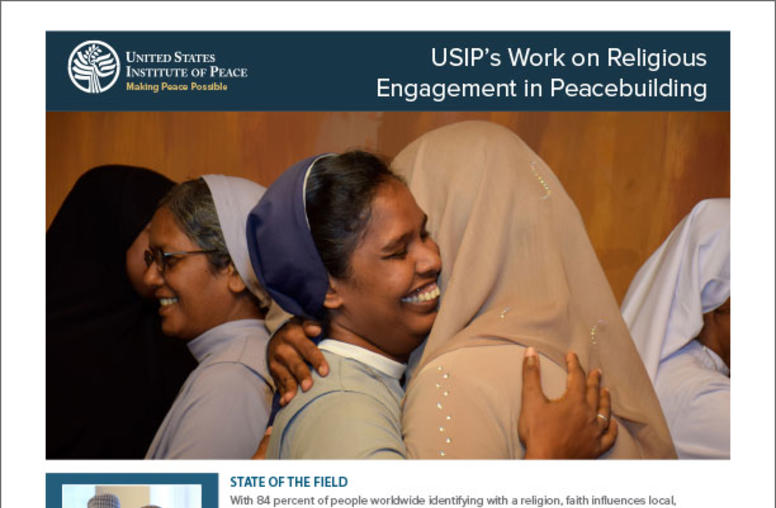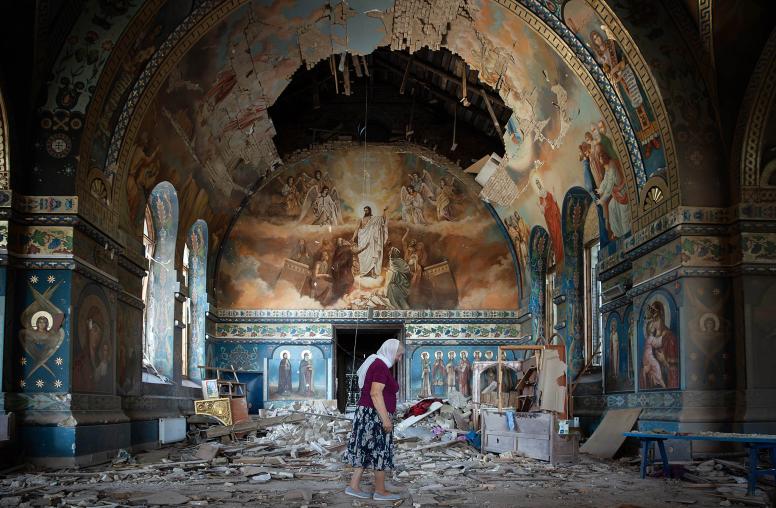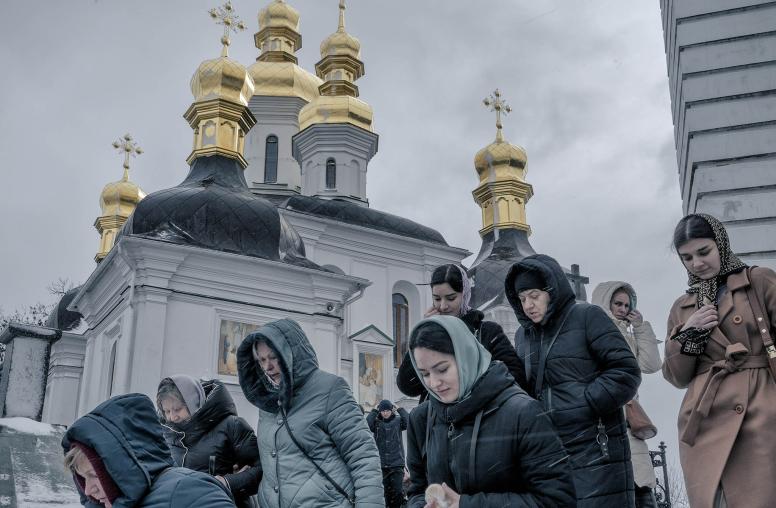Talking to Religious Actors to Preserve Indigenous Languages
The U.N.’s International Decade of Indigenous Languages should involve religious actors in preserving intangible heritage.
In the past, most cultural preservation efforts have focused on protecting the tangible manifestations of heritage such as buildings, worship sites and other physical items. But a 2019 U.N. resolution on the rights of Indigenous peoples emphasized the critical loss of Indigenous languages and its importance to their cultural heritage, thus mandating an international effort to “preserve, revitalize and promote Indigenous languages.”

The resolution declared 2022–2032 the International Decade of Indigenous Languages — and tasked UNESCO to lead the charge to preserve endangered Indigenous languages and raise awareness about the cultural diversity these minority languages bring to a global community.
However, despite Indigenous cultures and languages having significant interplay with their religious traditions, there was no mention of any religious actor participation in the original U.N. resolution. With the International Decade of Indigenous Languages starting this year, UNESCO should give religious communities a more prominent role in its work to preserve the intangible heritage of Indigenous languages.
The Interplay of Indigenous Language and Religion
The intertwined nature of religion and Indigenous language is readily apparent, and that overlap makes it crucial to involve religious actors in this work. Oral communication is a commonality across all faiths, and much of what is considered intangible heritage has religious aspects. In some traditions, language is considered divinely inspired. In other contexts, language preserves unique cultural and religious traditions otherwise lost to time through symbols, iconography or religious oratory and chants.
The beliefs of a community are often retold through oral histories and religious rituals, demonstrating the importance of prioritizing outreach to religious groups beyond simply inhabiting their physical spaces. Yet the history of Indigenous communities around the world is one often marked by extreme oppression from outside forces, targeting both their language and their faith. The preservation of language helps ensure individuals can access their community’s present and past, while also aiding in the preservation of religious heritage.
Because while language is certainly built on vocabulary and grammatical structure, a dialect's roots also emerge out of its speakers’ worldview, identity and faith — a broad conception of religion that requires a more holistic approach to its preservation.
A Pattern of Overlooking Religious Actors
Since the resolution passed in 2019 without direct reference to religious actors, U.N. initiatives have developed a pattern of overlooking the role of faith actors and religion in preserving Indigenous languages.
For example, while the “Los Pinos” Declaration stressed support for safeguarding language, songs, myths, word games, poetry and oral traditions, it made only passing reference to religion. And nowhere in UNESCO’s Global Action Plan for the upcoming decade is there explicit mention of Indigenous and minority religious institutions and their potential role in Indigenous language preservation. UNESCO does recognize that other groups besides those mentioned in the plan will be involved — referencing "other stakeholders" throughout — but the lack of vision for collaboration with religious communities is problematic. Religious communities, both priests and laity, as well as women, men and youth, could all play active roles in helping preserve their culture and faith.
UNESCO not including religious actors is an unfortunate oversight, as it matters for peacebuilding and reconciliation — two goals noted in the plan that are often facilitated by religious actors and institutions, whether publicly or behind the scenes.
As is evident worldwide, the role of religion is a factor in global affairs. Faith actors, in many contexts, play a pivotal role in driving conflict and promoting peace. UNESCO would benefit from learning how religious actors and institutions have contributed to the prevention and resolution of conflict, and then considering how best to engage the religious sector in preserving Indigenous languages. USIP has documented how religious actors and their institutions provide unique access and deep motivation for peacebuilding and preserving their heritage.
How to Include Religious Actors in Indigenous Communities
Thankfully, it is not too late. There are natural on-ramps to include religious actors. UNESCO’s Global Action Plan emphasizes the enhancement of relevant stakeholders alongside participating actors.
So far, these stakeholders include Indigenous youth, women and older adults — opening the door for religious actors to be added as well. Doing so would be smart policy. Regarding an often overlooked community, religious women have proven their skills and leadership in negotiating peace on the frontlines worldwide. Findings from USIP’s work show that when women use culturally or regionally specific dialogue in discussing peace, they are often both respected and successful in negotiating peace. Similarly, the convergence of religion, language and Indigenous culture makes clear the importance of working with religious leaders and laity in Indigenous communities.
In addition, UNESCO’s plan calls on key stakeholders to organize and host events related to increased language access and preservation. Here, religious communities can help as well. There is an entire section of the Global Action Plan devoted to multi-stakeholder framework. And in it, the plan lists primary target groups such as duty bearers and enablers — which the framework defines as "key actors in realizing their obligations and responsibilities towards Indigenous peoples because they enhance Indigenous language vitality and expand the safe space for the use of Indigenous languages in public domains." Religious actors are a missing piece of that puzzle and could bring substantial assistance to the effort on a national and international level.
For the International Decade of Indigenous Languages to meet its goal of preserving endangered Indigenous languages, it is imperative to involve religious actors, both from a posture of insight and of peacebuilding and reconciliation. UNESCO would be wise to develop advisory bodies open to all faith communities and secular groups to advise them on how best to partner and benefit from their unique insights and experiences. Otherwise, UNESCO’s approach will risk falling prey to the same criticisms that spurred the creation of a special decade by ignoring key communities on the frontlines of language preservation.
Indigenous languages have existed within religious communities for ages, and the U.N.'s goal is to preserve these languages for posterity. Would the U.N. not be more successful by partnering with religious actors in this important goal? UNESCO should work to build partnerships with religious actors to truly succeed in the daunting task of preserving Indigenous languages.
Mackenzie Miller is a research assistant with the religion and inclusive societies team at USIP.



